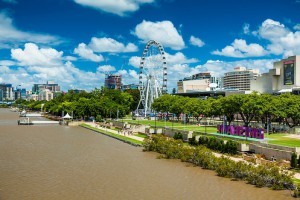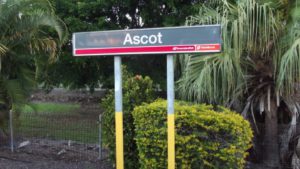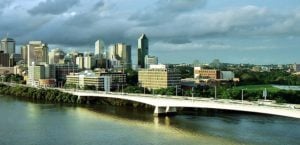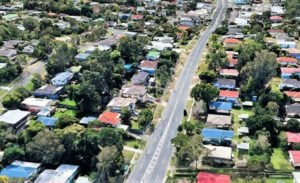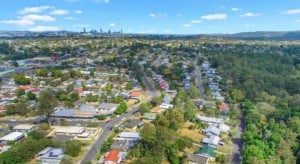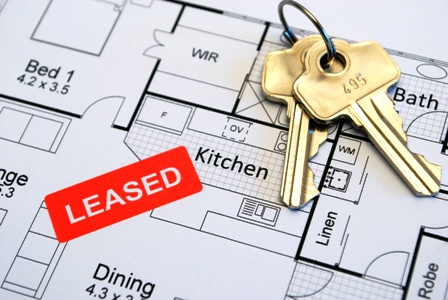The Top 15 Brisbane Suburbs Primed for Growth in 2021
By Brett Warren
Considering an investment into the Brisbane property market but don’t know where to start?
Well…after Sydney and Melbourne, Brisbane is arguably Australia’s third-biggest property market.
And so far this year it’s been one of Australia’s top performing property markets
The latest Corelogic stats show that Brisbane house values grew 6.2% over the last quarter and 14.8% over the last year.
Brisbane will exhibit high double digit capital growth over the full 2021 year as some of the underperforming months of last year fall off the rolling averages.
Brisbane apartment values did not grow as much, + 2.3% over the last 12 months
But there is still plenty of growth and opportunity left in the Brisbane housing market.
The Sunshine State is shining and strong demand for detached houses and outstanding demand for lifestyle areas means as an investor, if you buy the right investment property in the right location, you could be primed to supercharge growth.
Westpac Bank recently updated its property forecasts, with Brisbane prices tipped to surge 20 percent between 2022 and 2023, meaning Brisbane is likely to be one of the best performing property markets over the next few years.
There is no such thing as a hotspot
But first things first.
I don’t believe in hotspots or investing in an area just because it is expected to be the “Next Best Thing”.
“Hot-spots” tend to become next year’s “not-spots” and I’m a long-term investor, meaning I take educated risks based on evidence and fundamentals, I don’t gamble.
Instead, I like to approach this list of top Brisbane suburbs for 2021 in a way where I get the opportunity to highlight those strong and stable suburbs that have both shown consistent historical growth and also have the right demographics to suggest future long-term growth.
Mind the neighbourhood
Neighbourhood is now more important than ever
Let’s not forget that the ability to work, live and play all within 20 minutes’ reach is the new gold standard desirable lifestyle.
And this ‘ultimate goal’ is now more important than ever thanks to our new “Covid Normal” world.
If social distancing and the Covid-19 environment has taught us anything, it has taught us the importance of the neighbourhood we live in.
If you can leave your home and be within walking distance of, or a short trip to, a great shopping strip, your favourite coffee shop, amenities, the beach, a great park, the recently implemented coronavirus restrictions might seem a little more palatable than if you had none of that on your doorstep.
But the reality is, this concept is nothing new.
In fact, the rise of the 20-minute neighbourhood started long before Covid19.
You will find these are often in the gentrifying aspirational lifestyle suburbs of our capital cities and people will pay a premium to either own a property in these locations or rental property in these locations.
Many inner suburbs of Australia’s capital cities and parts of their middle suburbs already meet a 20-minute neighbourhood test.
However very few of the outer suburbs would do so.
Follow the demographics
According to leading demographer Bernard Salt, the coming of the coronavirus has changed the Australian workforce and not just by prompting adaptation to new technology like Zoom calls and triggering a work-from-home movement, but also by rigidly dividing the nation according to skill sets.
The Australian Bureau of Statistics classifies every job according to one of five skill levels with Skill Level 1 being the most skilled.
It is well recognised that the rich – such as people with a Skill Level I job – are getting richer, and at the other end of the spectrum, Skill Level 5 jobs requiring little or no previous work experience (like general sales assistant, kitchen hand) are experiencing no wages growth.
A Skill Level 1 job requires a bachelor’s degree or higher, or the equivalent of at least five years’ training.
People with these types of jobs will earn more income and be able to afford to pay more for their properties.
The pandemic cricket demand for skills in finance (accounting), risk management (solicitors), computer programming and many other skill levels one jobs.
However, the story for the balance of the workforce has been quite different.
So understanding where the skill level one worker lives in Brisbane is critical and be seen in the following graphic provided by Bernard Salt in The Australian.
Top 15 Brisbane suburbs for 2021
Whether you are looking for a higher-end purchase or a beginning investor, I think these are the Brisbane suburbs that are set to take advantage of the changing face of the city.
In addition, while growth is on the mind of every investor, importantly these locations could also be considered recession-resistant.
Why?
Remember we talked about the importance of neighbourhood above?
Each of these noteworthy suburbs are close to major employment hubs, they have bulletproof school catchments and immediate access to public transport and local infrastructure.
Here, they’re listed in order of the highest to lowest median property price, revealing data from Domain Group and Real Estate.com.au.
1. New Farm / Teneriffe
Total population: 12,534 & 5,341
Average age: 20-39
Median property price: $1,827,500 & $2,000,000
When they said property is as safe as houses, they were probably thinking about New Farm and Teneriffe.
This incredible inner-city suburb has all the ingredients for a bulletproof investment.
It has premium lifestyle precincts, high walkability, low commute times and great school catchments, all a stone’s throw from our biggest employment hub, the rapidly expanding CBD.
2. Ascot
Total population: 5,787
Average age: 40-59
Median property price: $1,597,000
Ascot is right in the middle of Brisbane’s two largest (and rapidly expanding) employment hubs: the CBD and the airport precinct.
While apartments have taken a back seat due to nearby oversupply issues, houses continue to go from strength to strength.
Another suburb with an iconic café strip, strong school catchment and an easy train or ferry ride into the CBD.
3. Highgate Hill
Total population: 6,195
Average age: 20-39
Median property price: $1,272,500
With a quiet neighbourhood just a stone throw from West End, South Bank and closest to the City, Highgate Hill is probably one of the best suburbs in Brisbane.
It’s peaceful with good dining options and combined with recent and upcoming infrastructure developments such as new roads, transit, schools, hospitals and other major infrastructure projects, the area creates great opportunities for business and investors alike.
While the whole suburb is primed for growth, the streets which fall within the catchment area for Brisbane’s best school, and those with sweeping city views are in especially high demand.
4. Wilston
Total population: 3,949
Average age: 40-59
Median property price: $1,162,500
Wilston already has a real community spirit with a very strong school catchment and café strip that locals flock too.
This suburb has really gentrified over the last few years with old workers cottages, replaced with bigger, modern contemporary homes.
Pros include a railway stop and a new Northern Busway, it is primed to take advantage of the Brisbane Airport expansion.
5. Ashgrove
Total population: 13,046
Average age: 40-59
Median property price: $1,105,000
With a cosy neighbourhood feel, while only being four kilometres north-west of the city, Ashgrove is a convenient suburb for established professionals and families who want a little room to move without having to move too far away from the city centre.
6. Taringa
Total population: 8,381
Average age: 20-39
Median property price: $1,000,000
Taringa is a great suburb – lovely and green, close to the city, good transport with a train station and buses plus you get all the benefits of living near a university (sporting fields, cinemas, cafes and restaurants).
The suburb is multi-generational but perfectly suits families, young working professionals and university students due to the nearby iconic schools, public transport options and entertainment precincts.
7. Tarragindi
Total population: 10,793
Average age: 40-59
Median property price: $863,000
Tarragindi is a small suburb of just 8 streets and a strong family feel and excellent infrastructure.
The short commute to CBD via Pacific Motorway or access via bus at the Holland Park Busway is a huge bonus for those rightfully keeping ‘neighbourhood’ at the forefront of their minds.
8. Holland Park
Total population: 8,097
Average age: 20-39
Median property price: $826,000
Holland Park is widely talked about as a suburb that has the benefit of great easy access to Brisbane City while still being surrounded by amazing parklands, excellent schools, charming cafe’s, bars and restaurants.
9. Cannon Hill
Total population: 5,539
Average age: 20-39
Median property price: $812,000
Cannon Hill is considered one of the best suburbs in Brisbane for its real estate and lifestyle potential, with the property market having moved exponentially in recent years.
The area has good schools, a train line, and the gentrification of shopping centres and older homes.
10. Wavell Heights
Total population: 9,691
Average age: 40-59
Median property price: $762,000
Another high demand market thanks to its close proximity to many amenities and transport.
The suburb is within a few minutes of Chermside Shopping Centre and only 10 minutes travel time from the airport and CBD.
11. Mansfield
Total population: 8,695
Average age: 40-59
Median property price: $727,500
Thanks to great infrastructure and high demand for school catchment areas, Mansfield is one of the most sought after pockets in the south-eastern suburbs of Brisbane.
Local commercial and retail development and expansion in Mt Gravatt also primes the suburb for more growth in future.
12. Stafford
Total population: 9,552
Average age: 20-39
Median property price: $670,000
Stafford is surprisingly close to everything from choices of shops, schools, hospitals, to the city and transport making the suburb extremely easy to live in and get around.
Combined with it being a notoriously high-demand market with consistent property price growth, it’s no wonder the suburb is at the top of so many investors’ lists.
13. Stafford Heights
Total population: 6,821
Average age: 20-39
Median property price: $652,125
Just over the hill from big brother Stafford, this suburb has started to hit it off with families and investors alike.
With a number of retirees moving on and government housing hitting the open market, professional couples and families started to take over and put some money into the area, spending up big on their homes and transforming the neighbourhood to a more desirable one.
14. Chermside West
Total population: 6,449
Average age: 40-59
Median property price: $637,500
Chermside West offers the best of both worlds: it’s close to retail and business hubs, but it also offers a quiet retreat from its busier neighbouring suburbs.
Add to that two major Hospitals and a strong school catchment, you start to understand that it has strong investment credentials.
15. Keperra
Total population: 6,791
Average age: 20-39
Median property price: $570,000
Arguably the most value of any Brisbane suburb, with a strong community feel and still very low key.
This suburb has awakened since a number of train stations have been planned for the area, better connecting it to greater Brisbane.
Limited stock of property and quick property sales has also imposed a demand which will only continue to push up prices for properties.
Changes in Brisbane property prices over the past two years
During the height of Covid-19, Brisbane’s housing market defied the odds, shone through, and even came out relatively unscathed.
By the end of 2020, Greater Brisbane’s property price median hit a new record high of $616,387, which is $28,000 above the previous record set in early 2020.
House prices have risen modestly over each quarter of the 2020 calendar year, rising a further 0.8% over the December quarter to end the year 5.6% higher than the last.
Dr Nicola Powell, Senior Research Analyst at Domain explained:
“First-home buyers became active utilising incentives and low mortgage rates became the norm.
Upsizing buyers were enticed by cheaper credit and altered their wish-lists to think more about property characteristics such as space and lifestyle, rather than commute time and distance to the CBD.
The rising interest from interstate buyers and the movement of residents from regional Queensland into Greater Brisbane will continue to support demand. Outer suburban and lifestyle areas will be the main beneficiaries.”
By December 2020, 85% of Brisbane’s suburbs recorded annual growth.
Double-digit percentage price rises were even noted across 17% of suburbs.
In Brisbane’s north, 88% of suburbs increased in price, 86% in Brisbane’s west, and 85% in Bayside South.
In Bayside North and Brisbane East growth was seen in around 80% of the suburbs in the area.
Brisbane’s suburb of Thorneside recorded the strongest growth across all the suburbs with a 28.5% increase in house prices over the two-year period.
Virginia, Highgate Hill, Carina Heights, and Yeronga also saw house prices surge more than 20%.
Despite most Brisbane suburbs enjoying property price growth, 15% of suburbs recorded a fall in median house prices by December 2020.
The steepest price falls were seen in Ormiston (8%) and Burpengary East (8.4%).





